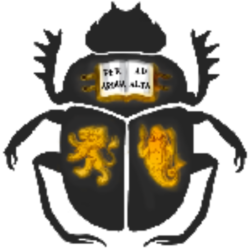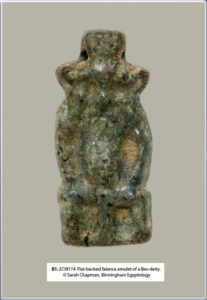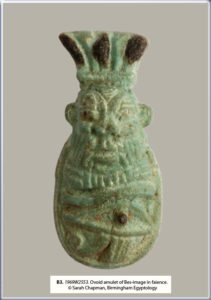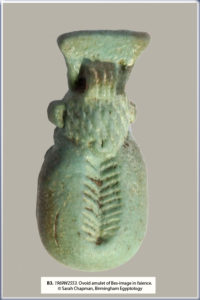Click the images to enlarge
——————————————————————————————————————————————————————————-
B. Object Labels (pdf file)
The obscure origin of the Bes-image begins in the Middle Kingdom with the introduction of Aha. Aha is named on two ivory ‘magic knives’ during this period and is depicted frontally, something that remains common in Bes-image iconography throughout Pharaonic history (Malaise 2000: 179). The frontal facing depictions of these deities provoked discussion of a possible foreign inspiration, due to a lack of similar facing deities in the Egyptian pantheon (Romano 1980: 40). However, the frontal image is not unique (Zivie-Coche 2011: 6-7) and other deities, such as Hathor also appear frontally in certain contexts and this cannot therefore be given as a reason for theorising a foreign origin for the Bes-deities. Romano has shown convincingly that the introduction of the Bes-image actually depicts that of a lion on hind legs (Romano 1980: 42). Often the tail of an animal can be seen in these early images and Bes-deities are frequently depicted wearing animal skins in their later iconography.

Small statuettes have also been found from the Middle Kingdom exhibiting leonine features, including a female figure which may preserve an ancient origin for the goddess Beset (Dasen 1993: 70). One of the objects in the two collections exemplifies these early iconographic traits in the development of the Bes-image, ECM114. This small amulet clearly exhibits the bow legs of the leonine figure, as well as the long lion tail dropped between the legs and ears protruding from the edges of the face. A large lion mane can still be seen on 1969W1212 and on the reverse of 1969W2553 later in the New Kingdom. Bes-images during the Middle Kingdom are mostly found on talismanic or ritual equipment, such as the ivory knives and therefore are seen to have purpose in Egyptian magical practises.
Back Home Next




